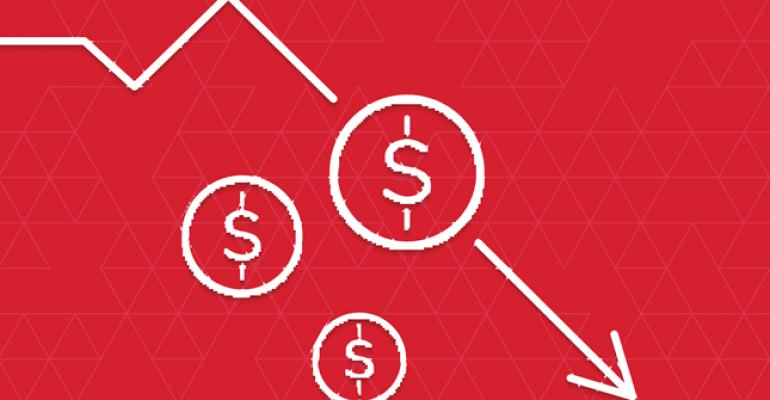Since March, our inboxes have been flooded with news of same-store declines, restaurant closures, and discussions of a recession. However, this news begs the question, are customers spending less? Or are they just spending elsewhere and our data simply doesn’t capture who or what is stealing a share of customers’ stomachs?
A number of variables should indicate that consumer spending should be up: gas prices and unemployment levels are near the lowest they have been in years, interest rates are still low, and the median household income has increased more than 5.2% from a year ago.
Nonetheless, multiple sources continue to indicate that year-over-year same-store sales are down, driven by declines in customer traffic. In the past, when a certain segment reported declines, the decline could be attributed to gains by another reported segment.
However, not captured in that data, is the traffic growth attributed to other sources: some new and some just starting to gain popularity. These shifts in consumer purchasing behavior are fueled, in part, by Millennials’ spending power. Some of these other sources include:
• Meal prep delivery services like Blue Apron and Plated that are growing at a steady pace,
• C-stores and grocery, which continue to up their game with not only the quality of the fresh prepared items they offer but by also leveraging two key attributes that define the millennial population: convenience and customization, and
• A number of chef-inspired fast-casual concepts that have entered the playing field, but aren’t accounted in the reported figures.
Regardless, large restaurant chains are experiencing traffic declines at a time when costs are increasing with changes to labor legislation. As a result, restaurant chains are fighting for share and grappling with how to win those customers back.
Before you let fear set in and make drastic decisions, be proactive and implement some of the following marketing and operational strategies to grow long-term traffic.
Don’t immediately react by discounting. An increase in discounting is not necessarily synonymous with an increase in traffic. Responsiveness to discounting (couponing or reducing menu board prices) reflects a customer’s price sensitivity and that can vary significantly from one restaurant to the next, based on key variables such as demographics, the number of revenue drivers in your area (e.g. shopping, businesses, and other competition), and other macro-economic factors (e.g. unemployment levels). Moreover, even if the discounting provides a favorable impact in the short term, without a proper exit strategy, it can ultimately be a costly venture that has a long-term detrimental effect on your profitability.
Implement local store marketing tactics. Since customer price sensitivity and purchase behavior can vary from location to location, try a more targeted approach. Running local store coupons via direct mail or freestanding inserts can be more effective.
With minimal cost, you can also increase brand awareness through other non-conventional local marketing tactics such as school fundraisers, sports sponsorships, and attendance/participation at community charitable events.
Leverage current relationships to drive frequency. Your loyal customers are your best customers. Focus on understanding what these customers love about the brand and how you can tell that story. If you have a loyalty club or customer e-mailing list, conduct surveys to glean that insight. Consider adding a loyalty program if you are currently not using one.
Utilize technology to make the customer experience more convenient. Do you have a mobile-friendly website, mobile application, and/or mobile loyalty program? Do you invest in digital advertising via search engine marketing or social media? How easy can customers find your restaurant, check out a menu, place an order, and pay through a mobile device? While this comes with additional costs, such programs and initiatives generally provide a positive return on investment if done right.
Make data-driven marketing decisions. Analysis at the transaction level can reveal a treasure trove of information about your customers and their buying habits. Craft an action plan for how you’ll use that data. Transaction data also details when customer volume is high and low, so you can adjust labor schedules to match. Cutting labor costs during slow times will save money, and staffing up during busy periods will improve the customer experience.
Be mindful of the customer experience. Proactively seek out customer feedback through surveys (in-store or on-line) or through front-of-house interaction. Ask your customers what you are doing well and where there are areas for improvement. Reassess what procedures you have in place for service recovery. Is your staff empowered to address customer complaints in a timely and effective manner?
Optimize your menu. With food costs relatively favorable right now, it provides an opportunity to introduce new product offerings that can communicate both value and quality at the same time. Feature new and other margin favorable items on your menu to help drive purchase decisions. Also, consider removing or re-engineering products that have higher food costs and represent a lower percentage of your menu mix.
Most important, don’t react too quickly. Take the time to build a strategy. Define and establish key measures of success and an appropriate period to evaluate that success. And where possible, test initiatives before a national roll out. By testing, you will likely have a better understanding of the implications of the program on not only your sales and traffic, but on labor, the brand, and other key stakeholders.

